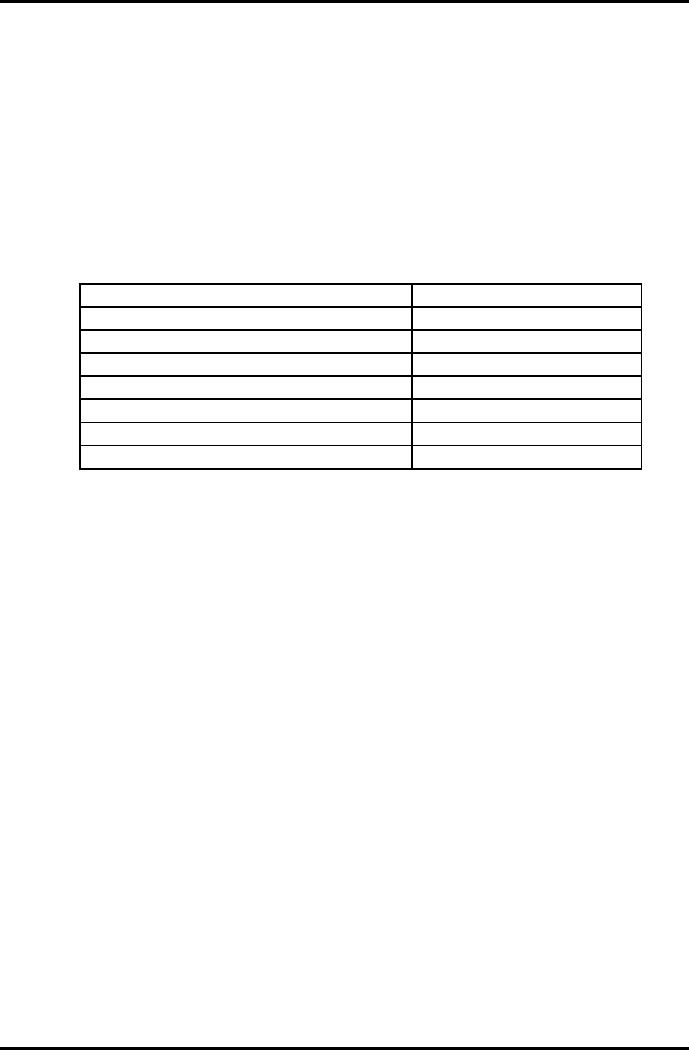 |
ACCOUNTING FOR INCOMPLETE RECORDS |
| PRACTICING ACCOUNTING FOR INCOMPLETE RECORDS >> |

Advance
Financial Accounting
(FIN-611)
VU
LESSON
# 1
ACCOUNTING
FOR INCOMPLETE
RECORDS
1.
Introduction
This
topic is also known as Single
Entry System of
Accounting. In
this chapter we will
learn
how an accountant prepares financial
statements of those organizations
which
are
not keeping up proper double entry
book keeping system of
accounting.
From
accounting system stand
point, business organizations
can be classified into
three
broad categories:
1.1
Small
scale business
entities
These
consist of very small sized
business entities like;
barber shop, mutton
shop,
washer man, general store,
electrician etc. etc.
1.2
Medium
scale business
entities
These
consist of medium sized business
entities like; drycleaner, motor
car
dealers,
house building contractors,
schools etc. etc.
1.3
Large
scale business
entities
These
consist of large sized
business entities like;
importers/exporters, motor
car
manufactures, transporters etc.
etc.
Here
it must be made clear that
large scale business
entities have these much
resources
with them
that these can easily
afford a systematic accounts
department where they
will be
following the double entry book
keeping system. Moreover,
most of these
concerns
are incorporated bodies and
these have to maintain
systematic accounting
records
in order to fulfill requirements of the
Companies Ordinance 1984 and
International
Financial Reporting Standards
(IFRS).
2.
Accounting
for Small scale business
entities
Small
scale business entities
are often single
owner organizations
(Sole
proprietorship).
These are very small in size
and can not really run an
accountants
department
in their organizations. They have a very
little setup in which a sole
trader
is
acting so many rolls; he/she is the
sales manager, and also the
purchase manager,
also
responsible for marketing and accounts
matters as well.
A
sole proprietor is also
concerned about financial
performance (profitability) and
financial
position of the organization, which
can make him/her able to
take certain
future
decisions. Certain government
agencies, like taxation
department, also
require
knowing
profits of the
organization.
But as
the size of the
organizations are very little and
these can hardly afford
an
accountant
therefore a very simple accounting
system is proposed for
such
organizations.
2.1
Accounting
Records
These
organizations do not have to keep any
complex accounting records,
these are
directed
by their accounts consultant
(Qualified Accountants) to keep
certain
information
relating to cash receipts
(introduction of fresh capital) and
payments
(drawings)
and also relating to the
period end balances of assets and
liabilities. As size
of
the transactions are very
little therefore one can
remember very easily what are
the
1

Advance
Financial Accounting
(FIN-611)
VU
year
end balances of loan taken
or was there any addition or
disposal of assets during
the
year. Finally the
consultants prepare a statement of
profit or loss for the
period and
also
a balance sheet as on the
closing date of such
period.
2.2
Statement
of Profit or Loss
As you
have studied in your earlier
courses that profit is an out
come of the Income
Statement
that is prepared in a systematic way with
the help of a trial
balance
extracted
from the ledger. But over
here in the absence of a
trial balance we are
not
able
to prepare an Income Statement.
Here we will see that where
that profit goes
within
the financial statements, we finally find
that the profit is added up
in the
Owner's
Equity, which appears like
this:
Rs.
Owner's
Equity (opening
balance)
***
Add
Fresh
capital (introduced during the
year)
***
Net
profit (for the
year)
***
Less
Drawings
(during the year)
(**)
Owner's
Equity (closing
balance)
***
For
small scale business
entities, which are not preparing
proper books of
accounts
and
cannot extract a trial
balance, the technique to
calculate Net Profit will be to
come
other
way round.
To
calculate Net Profit figure from
the above equation one must
know the all other
information
that has to be put into it. Now
the above equation will be
reversed and
Net
Profit figure will be its out
come and this equation is then
named as the
"Statement
of Profit or Loss".
Name of
the Organization
Statement
of Profit or Loss
For
the year ended December
31, 20x7
Rs.
Owner's
Equity (closing
balance)
***
Add
Drawings
(during the year)
***
Less
Owner's
Equity (opening
balance)
(**)
Fresh
Capital (introduced during the
year)
(**)
Net
profit (for the year)
[balancing
figure]
***
2.3
Statement
of Affairs
From
examination stand point,
Drawings and Fresh capital will be
given in the
questions
but often the students will be
required to calculate the
opening and closing
balances
of Owner's Equity as these will not be
given in the question as a
single
amount.
2

Advance
Financial Accounting
(FIN-611)
VU
If you
have not yet forgotten the
basic accounting equation then
Statement of Affairs is
very
simple to understand. What you learned in
the basic accounting
equation was
that:
ASSETS
=
OWNER'S
EQUITY + LIABILITIES
So to
calculate the balance of
owner's equity the equation
will be reversed like:
OWNER'S
EQUITY = ASSETS
+
LIABILITIES
Name of
the Organization
Statement
of Affairs
As on
Opening and Closing
Date
Opening
Closing
Rs.
Rs.
ASSETS
Furniture
and fixture (net of
depreciations)
***
***
Stocks
***
***
Debtors
(net of provisions)
***
***
Prepaid
expenses
***
***
Bank
***
***
Cash
***
***
LIABILITIES
Loan
(**)
(**)
Creditors
(**)
(**)
Accrued
expenses
(**)
(**)
OWNER'S
EQUITY (Net Assets)
***
***
The
balance of Owner's Equity
can also be termed as Net
Assets as it is the balance
of
assets
after subtracting all
liabilities.
2.4
Difference
between Balance Sheet and
Statement of Affairs
The
only difference is that in Balance
Sheet we put RESOURCES
(Assets)
against the
SOURCES
(Owner's
equity and Liabilities) by doing
this we come to know
the
financial
position of the organization,
whereas in Statement of Affairs we
simply
calculate
the balance of owner's
equity at opening/closing dates of
the accounting
period
by subtracting liabilities for the
asset. Balance sheet
equation provides help
in
calculating
the balance of owner's
equity and that's
all.
Practice
Questions
1
From
the following information prepare
statement of profit or loss for
the
year.
Rs.(000)
Opening
balance of capital
100
Closing
balance of capital
150
Drawings
40
Fresh
capital introduced during the
year
25
3

Advance
Financial Accounting
(FIN-611)
VU
2
Bilal
Anwar started in business on 1 January
2005 with Rs. 10,000 in a bank
account.
Unfortunately he did not keep proper
books of account. He is
forced
to submit a calculation of profit for
the year ended 31 December
2005
he had
stock valued at cost Rs.
3,950, a van which had cost Rs.
2,800 during
the
year and which had depreciated by Rs.
550, debtors of Rs.
4,970,
expenses
prepaid of Rs. 170, bank
balance Rs. 2,564, cash
balance Rs. 55,
trade
creditors Rs. 1,030, and
expenses owing Rs. 470. His
drawings were:
cash
Rs. 100 per week for 50
weeks, Cheque payments Rs.
673. Draw up
statements
to show the profit or loss for
the year.
3
Jehan
Zeb is a dealer who has not
kept proper books of
account. At 31
August 2006
his state of affairs was as
follows:
Rs
Cash
115
Bank
Balance
2,209
Fixtures
4,000
Stock
16,740
Debtors
11,890
Creditors
9,052
Van
(at valuation)
3,000
During
the year to 31 August 2007 his
drawings amounted to Rs.
7,560.
Winnings
from a football pool Rs.
2,800 were put into the
business Extra
fixtures
were bought for Rs. 2,.000.
At 31 August 2007 his assets and
liabilities
were: Cash Rs. 84;
Bank overdraft Rs. 165;
stock Rs. 21,491;
Creditors
for goods Rs. 6,002;
Creditors for expenses Rs.
236; Fixtures to be
depreciated
Rs. 600; Van to valued at
Rs. 2,500; Debtors Rs.
15,821; prepaid
expenses
Rs. 72 Draw up a statement showing
the profit and loss made
by
Jehan
Zeb for the year ended 31
August 2007.
4
Table of Contents:
- ACCOUNTING FOR INCOMPLETE RECORDS
- PRACTICING ACCOUNTING FOR INCOMPLETE RECORDS
- CONVERSION OF SINGLE ENTRY IN DOUBLE ENTRY ACCOUNTING SYSTEM
- SINGLE ENTRY CALCULATION OF MISSING INFORMATION
- SINGLE ENTRY CALCULATION OF MARKUP AND MARGIN
- ACCOUNTING SYSTEM IN NON-PROFIT ORGANIZATIONS
- NON-PROFIT ORGANIZATIONS
- PREPARATION OF FINANCIAL STATEMENTS OF NON-PROFIT ORGANIZATIONS FROM INCOMPLETE RECORDS
- DEPARTMENTAL ACCOUNTS 1
- DEPARTMENTAL ACCOUNTS 2
- BRANCH ACCOUNTING SYSTEMS
- BRANCH ACCOUNTING
- BRANCH ACCOUNTING - STOCK AND DEBTOR SYSTEM
- STOCK AND DEBTORS SYSTEM
- INDEPENDENT BRANCH
- BRANCH ACCOUNTING 1
- BRANCH ACCOUNTING 2
- ESSENTIALS OF PARTNERSHIP
- Partnership Accounts Changes in partnership firm
- COMPANY ACCOUNTS 1
- COMPANY ACCOUNTS 2
- Problems Solving
- COMPANY ACCOUNTS
- RETURNS ON FINANCIAL SOURCES
- IASB’S FRAMEWORK
- ELEMENTS OF FINANCIAL STATEMENTS
- EVENTS AFTER THE BALANCE SHEET DATE
- PROVISIONS, CONTINGENT LIABILITIES AND CONTINGENT ASSETS
- ACCOUNTING POLICIES, CHANGES IN ACCOUNTING ESTIMATES AND ERRORS 1
- ACCOUNTING POLICIES, CHANGES IN ACCOUNTING ESTIMATES AND ERRORS 2
- BORROWING COST
- EXCESS OF THE CARRYING AMOUNT OF THE QUALIFYING ASSET OVER RECOVERABLE AMOUNT
- EARNINGS PER SHARE
- Earnings per Share
- DILUTED EARNINGS PER SHARE
- GROUP ACCOUNTS
- Pre-acquisition Reserves
- GROUP ACCOUNTS: Minority Interest
- GROUP ACCOUNTS: Inter Company Trading (P to S)
- GROUP ACCOUNTS: Fair Value Adjustments
- GROUP ACCOUNTS: Pre-acquistion Profits, Dividends
- GROUP ACCOUNTS: Profit & Loss
- GROUP ACCOUNTS: Minority Interest, Inter Co.
- GROUP ACCOUNTS: Inter Co. Trading (when there is unrealized profit)
- Comprehensive Workings in Group Accounts Consolidated Balance Sheet